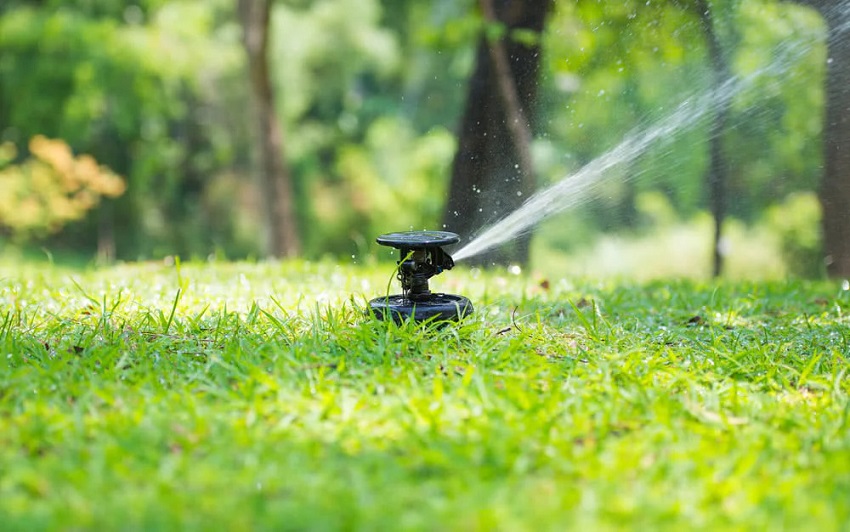Florida is known for its lush landscapes, thriving flora, and vibrant greenery. When it comes to the grass found in this beautiful state, there are many varieties to choose from. One type of grass that stands out is the thick grass commonly found in Florida. In this article, we will explore what exactly this thick grass is, its characteristics, benefits, and why it is so well-suited for the Florida climate.
Understanding Thick Grass in Florida
When it comes to maintaining a beautiful lawn in Florida, understanding the different types of Florida grass is essential. The term “thick grass” in Florida often refers to different grass species that have dense, full growth patterns. These grasses typically have a higher number of blades per square inch, giving them a lush and robust appearance. Some of the common types of florida grass include St. Augustine grass, Bahia grass, and Zoysia grass. Each of these species has its own unique qualities and benefits.
St. Augustine Grass
St. Augustine grass (Stenotaphrum secundatum) is a popular choice for lawns in Florida due to its ability to handle the state’s warm and humid climate. It is known for its thick, dark green blades and dense growth habit. St. Augustine grass performs well in both sun and partial shade, making it an excellent option for Florida yards. Its ability to grow in a wide range of soil conditions and tolerate some salt exposure makes it well-suited for coastal areas as well.
Bahia Grass
Bahia grass (Paspalum notatum) is another type of thick grass often found in Florida. One of its standout features is its remarkable durability and ability to withstand heavy traffic, making it a popular choice for sports fields, parks, and roadside areas. Bahia grass has a coarse texture and a light green color. It is known for its deep root system, which helps it stay green even during dry spells.
Zoysia Grass
Zoysia grass (Zoysia spp.) is a warm-season grass that is known for its dense growth pattern and ability to handle heavy foot traffic. This thick grass has fine-textured blades and a vibrant green color. Zoysia grass is highly adaptable and can grow in a variety of soil types. It has excellent heat and drought tolerance, making it an attractive option for Florida homeowners looking for a low-maintenance grass variety.
Benefits of Thick Grass in Florida
Now that we have explored the types of thick grass commonly found in Florida, let’s delve into the benefits that these grasses offer to homeowners and the environment.
1. Enhanced Aesthetic Appeal
Thick grass varieties, with their dense growth habits and vibrant colors, significantly enhance the visual appeal of any lawn or outdoor space. The lush and full appearance of these grass types creates a welcoming and attractive atmosphere. Whether you’re hosting lawn parties, playing with children, or simply enjoying a peaceful afternoon in your backyard, thick grass adds beauty and charm to the overall landscape.
2. Weed Suppression
One of the key advantages of thick grass is its ability to suppress weeds. The dense growth pattern of these grasses creates a natural barrier that prevents weed seeds from germinating and taking root. This reduces the need for excessive herbicide use and helps maintain a clean and healthy lawn. By choosing a thick grass variety, homeowners can enjoy a weed-free lawn with minimal effort.
3. Soil Erosion Prevention
Thick grasses play a crucial role in preventing soil erosion. Their extensive root systems act as anchors, holding the soil in place and reducing the risk of erosion caused by heavy rainfall or wind. In areas prone to flooding or with sloped landscapes, thick grass provides excellent soil stabilization, protecting the land from erosion and maintaining the integrity of the landscape.
4. Environmental Benefits
Thick grasses offer several environmental benefits that make them an eco-friendly choice. They improve air quality by capturing dust particles and reducing airborne pollutants. Grass also acts as a natural filter, trapping and breaking down pollutants and chemicals before they reach groundwater. Moreover, the healthy root systems of thick grass varieties contribute to enhanced water filtration and reduce the risk of runoff, which can carry sediment and harmful substances into nearby water bodies.
5. Low Maintenance Requirements
Another notable benefit of thick grass in Florida is its relatively low maintenance requirements. Thick grass varieties are typically resilient and have excellent tolerance for heat, drought, and disease. This means that homeowners can spend less time and effort on maintenance tasks such as watering, fertilizing, and pest control. The ability of these grasses to thrive with minimal intervention makes them a practical and cost-effective choice for Florida residents.
FAQs about Thick Grass in Florida
- How often should I water thick grass in Florida?
To maintain the health and vigor of thick grass, it is recommended to water deeply but infrequently. As a general guideline, aim for one to one and a half inches of water per week, either through rainfall or irrigation. - Can I grow thick grass in shady areas of my lawn?
While some thick grass varieties, such as St. Augustine grass, have moderate shade tolerance, most thick grasses thrive in full sun or partial shade. If you have heavily shaded areas, it is best to choose grass species specifically suited for those conditions. - What is the best time to mow thick grass in Florida?
For optimal lawn health, it is advised to mow thick grass when it reaches a height of around three to four inches. Regular mowing helps promote denser growth and discourages weed infestation. - How can I promote thick grass growth in my lawn?
To encourage thick grass growth, ensure that you provide adequate sunlight, regular watering, proper fertilization, and regular mowing at the appropriate height for your grass species. These practices will support the health and density of your grass. - Can I overseed my thin lawn with thick grass varieties?
Overseeding with a thick grass variety can help improve the density and overall appearance of a thin lawn. However, make sure to choose a grass species that is suitable for your specific region and growing conditions.
Conclusion
Thick grass in Florida encompasses various grass species that offer homeowners numerous benefits, including enhanced aesthetics, weed suppression, soil erosion prevention, and environmental advantages. By selecting the appropriate type of thick grass for their specific needs and growing conditions, Florida homeowners can enjoy a vibrant, low-maintenance lawn that adds beauty and value to their outdoor spaces. With proper care and maintenance, thick grass varieties can thrive year-round, providing a lush, green carpet for families to enjoy.
Tags: Florida grass types, Florida lawn care, lush lawns in Florida, Sunshine State landscaping, thick grass varieties




Leave a Reply